MENU
STIDS 2016 Home
About--
Topic list
Organization
Venue & Local Info
Registration
Program--
Keynote Speakers
Tutorials
Best Paper Award
Agenda & Papers
Programme
Call for Papers
Submission
Important dates
Classified Session
Download CFP
Previous websites--
STIDS 2015 Website
STIDS 2014 Website
STIDS 2013 Website
STIDS 2012 Website
STIDS 2011 Website
STIDS 2010 Website
OIC 2009 Website
OIC 2008 Website
OIC 2007 Website
OIC 2006 Website
Previous proceedings--
STIDS 2015
STIDS 2014
STIDS 2013
STIDS 2012
STIDS 2011
STIDS 2010
OIC 2009
OIC 2008
OIC 2007
C4I
Home

SEMANTIC
TECHNOLOGY FOR
INTELLIGENCE,
DEFENSE, AND
SECURITY
STIDS 2016
CALL FOR PAPERS
The Eleventh International Conference on Semantic Technology for Intelligence, Defense, and Security (STIDS 2016) will be held in November 2016 on the George Mason University Fairfax campus. The main conference will be held Tuesday and Wednesday, November 15–16, with a tutorial session on Monday, November 14, and a classified session at the TS-SCI level on Thursday, November 17, in Reston, VA, . STIDS provides a forum for academia, government, and industry to share the latest research on semantic technology for defense, intelligence, and security applications. Semantic technology is a fundamental enabler to achieve greater flexibility, precision, timeliness, and automation of anal- ysis and response to rapidly evolving threats.
THEME
This year the STIDS theme will be Semantics in the Internet of Things. Paper submissions related to this topic are most welcome, though there is no requirement for submissions to conform to the theme.
AUDIENCE
STIDS is a premier opportunity for collaboration and cross-fertilization between researchers and practitioners of semantic-based technology with particular experience in the problems facing the Intelligence, Defense, and Security communities. It will feature invited talks from prominent semantic researchers and recognized leaders from the target application domains.
To facilitate interchange among communities with a clear commonality of interest, STIDS encourages submissions that
showcase original, significant research as well as papers that present implementations and lessons learned or discuss,
compare, and evaluate the use of semantic techniques. In the tradition of an academic conference, submissions
are expected to make a tangible contribution to the field of semantics, and so marketing white papers and the like will not be accepted.
STIDS welcomes the submission of papers on semantic technology and ontology relevant to the fields of Intelligence, Defense, and Security. We are especially interested in papers on the following topics:
Submissions of technical papers or extended abstracts are welcomed. Each submission will be evaluated for acceptability by at least
three members of the Program Committee. Decisions about acceptance will be based on rele- vance to the above topic list,
originality, potential significance, and clarity. Because all accepted papers are to be presented at the conference, we require
that at least one of the submitting authors must be a registered participant committed to attending STIDS 2016.
All accepted authors will be invited to participate in a poster and demo session to provide an opportu- nity for extended
informal discussion.
Submissions are accepted only in electronic format and must closely follow the US Letter version of the IEEE format for conference
proceedings. For complete details and to download LATEX or MS Word templates, choose the US Letter size from the
IEEE’s Manuscript
Template webpage.
Technical papers must have between six and eight pages, including figures.
Extended abstracts must have between two and four pages. Submissions out- side these limits will not be reviewed.
In addition, papers that, at the time of submission, are under review for or have already been published in or accepted for
publication in a journal or another conference will not be accepted to the STIDS conference.
Submissions for the general session must be unclassified and releasable in a public forum.
They should be sent via the
conference submission site.
Details on submissions for the classified session will be posted on
Intelink.
TOPICS
SUBMISSION DETAILS
IMPORTANT DATES
| Paper submissions deadline: | EXTENDED TO: Tuesday, September 6 | |
| Notification of acceptance: | Thursday, October 6 | |
| Tutorial submission: | Saturday, September 17 | |
| Registration Opens: | Monday, October 24 | |
| Camera-ready papers due: | EXTENDED TO: Monday, October 24 | |
| Early bird rates end: | EXTENDED TO: Friday, November 4 | |
| Presentations due: | Thursday, November 10 | |
| Tutorials | Monday, November 14 | |
| Main Conference | Tuesday-Wednesday, November 15-16 | |
| Classified Session | Thursday November 17 |
PRESENTATION AND PUBLICATION
All papers accepted to STIDS 2016 will be presented during the conference and published in the conference proceedings, which will be available as a separate publication after the Conference.
TUTORIALS
The tutorial program will be held on Monday, Nov 14. Its main purpose is to provide overviews of the state of the art in the subfields of semantic technology. Tutorial duration can be half or full day. The level of difficulty may range from beginner to advanced, and may be strategic or technical in nature. Tutorial proposals are accepted in electronic format only (Adobe PDF recommended), and should be one to three pages in length. Detail instructions for submission are included in the Call For Tutorials.
